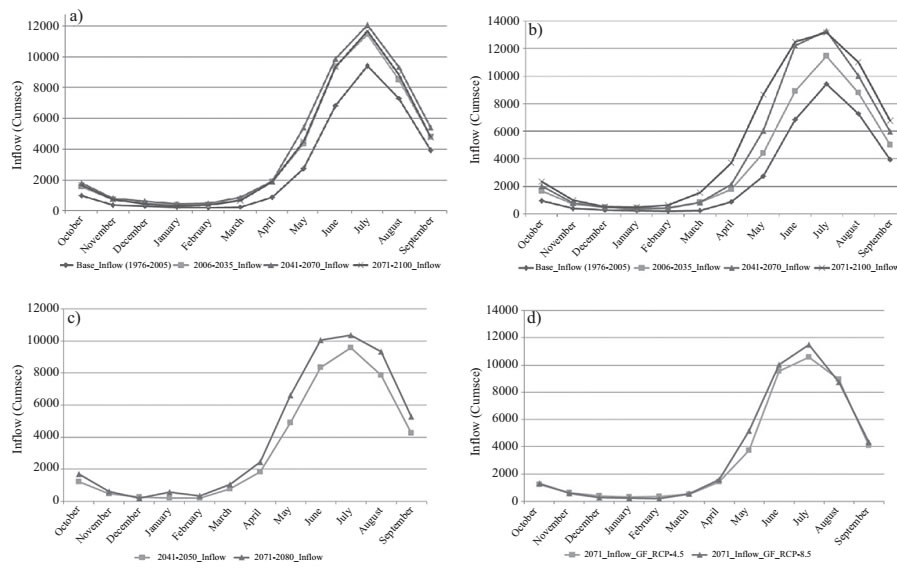Introduction:
The
increasing rate of warming is significantly higher in the
Hindu Kush Himalayan (HKH) region than the global
average in the past century (Duet al 2004). The
warming influence is much higher in the Eastern
Himalayas compared with the Greater Himalayan
region (Sheikh et al 2014). These temperature variations can have a potential impact on water resources of the UIB and the dependent downstream irrigation
demand areas, which are of great concern. In HKH region snow melt and glacier melt yield collectively account more than 70% of UIB stream-flows. Most part of HKH lies above 5,000 meters and contains the second-highest peak of K2 mountain i.e. above 8,000meter. Most of the annual precipitation in UIB falls during winter and spring (December-April, DJFMA) due to western disturbances that is eastward propagating synoptic systems embedded into westerly flow (Madhura et al 2014). Whereas the summer monsoon and local circulations only accounts 1/3 of annual precipitation (Young and Hewitt 1990). The climatic conditions of UIB are different from other regions of the country; as the monsoon circulation weakens towards northwest in UIB where high mountains of the Himalaya decrease the effect of monsoon circulation. Although the lower elevation stations do not monitor very high precipitation during both the winter and summer, but in contrast high altitude stations usually recorded much higher precipitation. Previous studies suggested very significant precipitation gradient at high altitudes and even at some parts (>5000 meters) of the basin the annual precipitation exceeds 2000 mm (Mukhopadhyay and Khan 2014). Fowler and Archer (2006), reported an increasing trend in both precipitation and temperature during winter while a cooling in summer temperatures over the past century. The average river flow to Tarbela reservoir at Besham Qila reaches 2425 cumecs (cubic meters per second) with the variation between 80% to 130 % from the mean. There are eight meteorological observatories (Kakul, Garidupatta, Balakot, Astor, Bunji, Skardu, Gilgit, and Gupis) in the study area.
Hydrological projections:
Total riverflow is
continuously increasing over time in the Upper Indus
River. The increasing rate of riverflow in both RCPs is
enhanced during thefirst two time slices (2006–2035
and 2041–2070), while it is smaller and not in the same ratio during the last time slice (2071–2100) in RCP8.5
and it even decreases for RCP4.5 when compared with
2041–2070. In the summer for RCP4.5, the increase is
24% during 2006–2035, 32% during 2041–2070, and
26% during 2071–2100. In RCP8.5, the percentage
increase is 23% during 2006–2035, 50% during
2041–2070, and 55% during 2072–2100. The results
show that percent increase is higher in winter than
summer in both scenarios. Maximum river flow
occurring in summer shows that the highest riverflow
in RCP8.5 is of 9720 cumecs for the period of
2006–2035, 11 837 cumecs for the period of
2041–2070, and 12 222 cumecs for the period of
2071–2100. In RCP4.5 the highest river flow in
summer is 9783 cumecs for the period of 2006–2035,
10 428 cumecs for the period of 2041–2070, and 9954
cumecs for the period of 2071–2100. The projection
for increased river flow was higher in RCP8.5 than
RCP4.5, mainly due to a significant increase in
temperatures.

GCISC References:
Gul C, Shaukat Ali. et al (2017): Using Landsat images to monitor changes in the snow-covered area of selected glaciers in northern Pakistan. Journal of Mountain Science (Accepted)
Khan, F., Pilz, J., & Shaukat Ali. (2017). Improved hydrological projections and reservoir management in the Upper Indus Basin under the changing climate. Water and Environment Journal.
Mountain Research Initiative EDW Working Group. Muhammad Zia ur Rahman Hashmi (2015). Elevation-dependent warming in mountain regions of the world. Nature Climate Change, 5(5), 424-430.
Shaukat Ali, Li, D., Congbin, F., & Khan, F. (2015). Twenty first century climatic and hydrological changes over Upper Indus Basin of Himalayan region of Pakistan. Environmental Research Letters, 10(1), 014007.
|